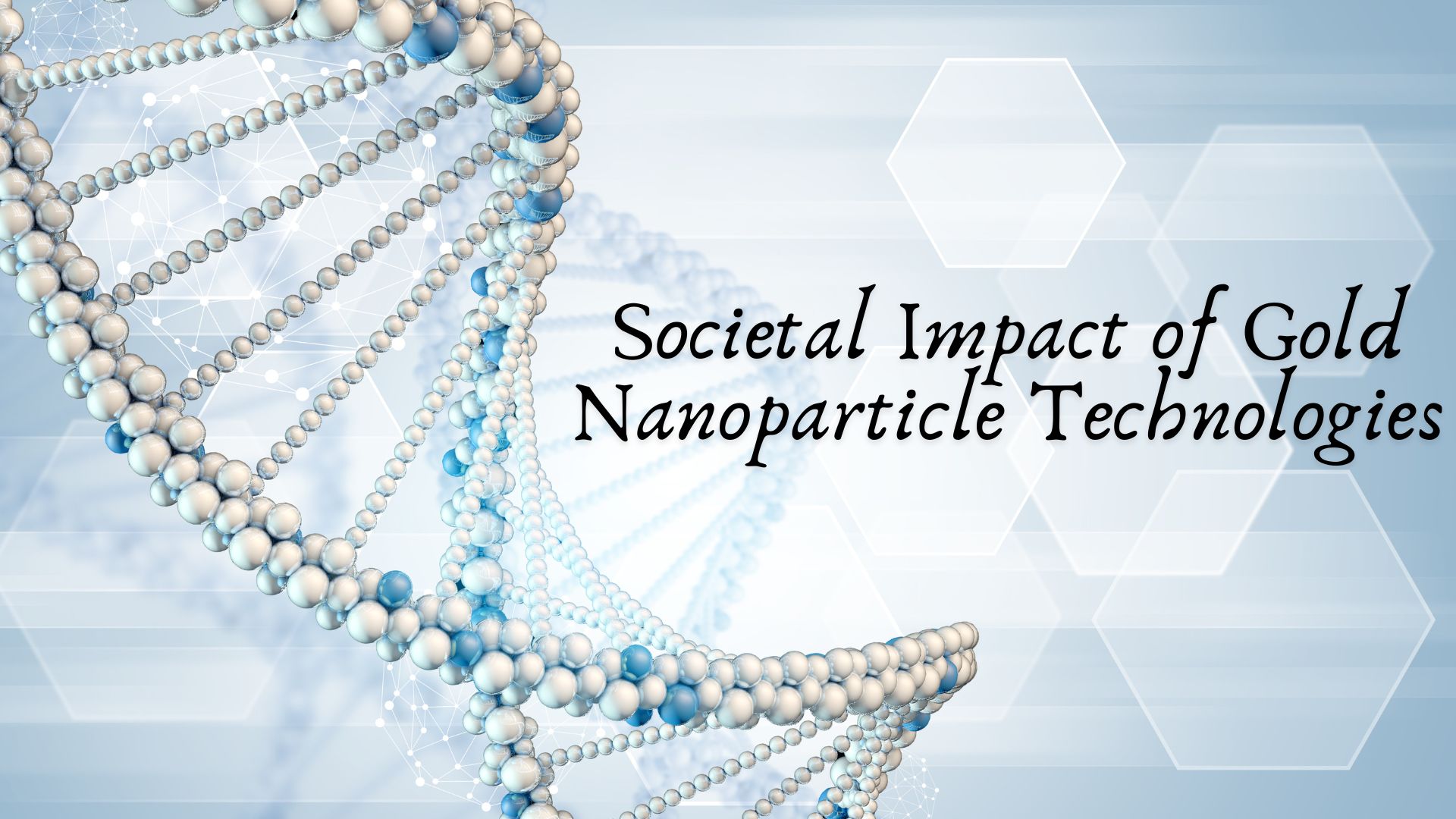Gold nanoparticles (AuNPs) have revolutionized the field of nanotechnology due to their unique optical, chemical, and physical properties. Though their influence is most prominent in scientific research and industry, their broader societal impact is rapidly emerging and multifaceted. From transforming medical diagnostics to enabling sustainable practices in electronics and environmental cleanup, gold nanoparticles are poised to become a cornerstone of the 21st-century technological landscape. This article delves into the societal impact of gold nanoparticle technologies, highlighting their roles in healthcare, environmental sustainability, economic development, and ethical considerations.
Gold Nanoparticles in Healthcare: Enhancing Diagnosis and Treatment
One of the most profound societal impacts of gold nanoparticles lies in the healthcare sector. Their biocompatibility and ease of functionalization make them ideal for use in a variety of diagnostic and therapeutic applications. Notable uses include:
Early Disease Detection
Gold nanoparticles are utilized in highly sensitive diagnostic tests such as lateral flow assays and biosensors. These technologies enable the detection of diseases like cancer, HIV, and even COVID-19 at early stages, potentially saving countless lives by initiating treatment earlier.
Targeted Drug Delivery
By attaching drugs to AuNPs and directing them to specific cells or tissues, researchers have developed more precise treatment strategies with fewer side effects. This is especially useful in oncology, where gold nanoparticles help deliver chemotherapy drugs directly to tumor cells, minimizing harm to healthy cells.
Photothermal Therapy
Gold nanoparticles can absorb light and convert it into heat, which is used in photothermal therapy to destroy cancer cells. This minimally invasive technique shows promise for treating solid tumors with high precision.
The societal impact here is clear: improved patient outcomes, reduced healthcare costs, and broader access to advanced medical treatments.
Environmental Applications and Sustainability
Gold nanoparticles also contribute to environmental protection and sustainability. As global concerns over climate change and pollution escalate, nanotechnology offers innovative solutions.
Pollution Detection and Cleanup
Functionalized AuNPs can detect heavy metals, toxins, and pathogens in water with high sensitivity. Their application in portable and rapid testing kits enables real-time monitoring of water quality in both developed and developing regions.
Catalysis and Green Chemistry
Gold nanoparticles serve as catalysts in chemical reactions, often replacing more hazardous substances. Their use in green chemistry reduces the generation of toxic waste, supporting environmentally responsible manufacturing.
Renewable Energy Technologies
AuNPs are being integrated into solar cells to improve light absorption and energy conversion efficiency. They also play roles in hydrogen production and fuel cell technologies, contributing to the global transition toward clean energy sources.
These innovations highlight how gold nanoparticles can help societies address pressing environmental challenges and move toward a more sustainable future.
Economic Development and Industry Transformation
The commercialization of gold nanoparticle technologies is creating new economic opportunities. From startups to major corporations, the development and scaling of AuNP-based products are generating high-value jobs in biotechnology, diagnostics, and materials science.
Job Creation and Investment
Industries built around AuNP technologies require skilled professionals in nanotechnology, biochemistry, engineering, and data science, leading to workforce development and job creation. Additionally, private and public investments in research and commercialization are boosting local and global economies.
Market Expansion
The global market for gold nanoparticles is expanding, with applications across cosmetics, food safety, agriculture, and textiles. This diversification ensures resilience and stimulates innovation across sectors.
Access and Equity
Although advanced nanoparticle technologies are often concentrated in wealthier nations, efforts to develop cost-effective solutions (e.g., inexpensive diagnostic kits) are helping bridge the gap. Technology transfer and international collaboration can ensure more equitable access to the benefits of AuNPs.
Ethical, Regulatory, and Safety Considerations
As with any transformative technology, the societal impact of gold nanoparticles must be examined through an ethical and regulatory lens.
Health and Environmental Safety
Despite their promise, the long-term effects of AuNP exposure on human health and the environment are still being studied. Responsible development requires rigorous safety assessments, transparent communication, and appropriate regulations.
Ethical Use in Medicine
Issues surrounding informed consent, data privacy (especially in nanoparticle-enabled diagnostics), and equitable access to treatments must be addressed. These concerns are critical to maintaining public trust and ensuring the ethical deployment of nanomedicine.
Regulatory Frameworks
Governments and international bodies are working to create robust frameworks for evaluating and regulating nanotechnologies. The goal is to foster innovation while protecting consumers and ecosystems from unintended harm.
Cultural and Educational Impact
Beyond the technical domains, gold nanoparticle technologies are influencing education and public engagement.
STEM Education
The excitement around nanotechnology is inspiring new generations to pursue careers in science, technology, engineering, and mathematics (STEM). Educational programs incorporating nanoscience are gaining popularity, helping to build a skilled workforce for the future.
Public Awareness
As gold nanoparticles become more integrated into daily life, public awareness campaigns and science communication initiatives are essential. Educating the public about the benefits, risks, and real-world applications helps foster informed societal dialogue.
Conclusion
The societal impact of gold nanoparticle technologies is both profound and far-reaching. From revolutionizing healthcare and environmental sustainability to transforming economies and challenging ethical norms, gold nanoparticles are shaping the future in diverse and meaningful ways. As research continues and these technologies become more widely adopted, it is essential to foster responsible innovation—ensuring that the benefits are maximized while minimizing potential risks. Through interdisciplinary collaboration, inclusive policies, and public engagement, gold nanoparticle technologies can play a transformative role in building a healthier, more sustainable, and equitable society.
